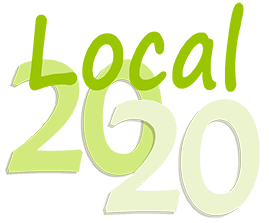Here is Local 20/20’s September column in the Port Townsend Leader titled “Resilience Review”. (Thank you, PT Leader!) It is copied below, as submitted.
Public Buses: Unfulfilled Potential
By Joe Calodich
In Renaissance Italy, a sculptor named Benvenuto Cellini promised to cast a metal statue for the city of Florence. This ambitious statue had many sharp angles making it hard for conventional metal to fill the cast. When the metal was poured, Cellini realized it was too thick to flow to the edges of his cast. He scrambled to heat the metal and fortunately gave the alloy enough fluidity to fill the cast properly.
Cellini’s situation is similar to one Port Townsend is in now. Recent construction projects in Port Townsend have provided us with an upgraded hospital, a new elementary school, renovations on Howard Street, and large housing developments on both F and Cook streets. These projects are brilliant plans like Cellini’s statue, however, like the metal in the cast, Jefferson Transit’s infrastructure is too sluggish to link these projects together.
Our transit system’s problem is route flexibility and operating hours that discourage ridership. Improving these will increase ridership.
The first possible improvement would be to raise the frequency at which the buses run. Currently routes around town run once an hour, and not all routes meet at the transfer station simultaneously. Routes going out of town run only four times per day. This requires riders to carefully plan their day, making bus riding a nuisance rather than a practical alternative to driving. By simply increasing the frequency of routes, the transportation system can turn itself into a viable mode of passage. A higher frequency would turn our sluggish bus lines, much like the metal in in Cellini’s statue, into a free-flowing system that can fulfill the town’s vision.
The second improvement is to have all routes run a bus in the opposite direction. Currently a passenger can ride the bus to their destination, but once they finish their task, they must get on a bus that will take them through the remainder of the route, and add unnecessary travel time. Buses going opposite directions make short trips viable, and add flexibility to the riders planning. Routes with multi-directional service will add convenience and flexibility to commuting, allowing them to focus on their own lives.
The third way to improve Jefferson Transit is to extend service hours. Currently there is no Sunday service, and most routes end around 7 P.M. Riders who take the bus later in the day are left stranded. By extending service hours public transit can complete an otherwise fragmented bus system, by increasing flexibility and giving riders more transit options.
Funding is essential to improve bus service. There are several possible solutions to this problem. One option is to increase fares. This helps fund costs for additional labor and maintenance. Another option is to institute parking meters downtown, and use their revenue to help fund buses.
Port Townsend has beautiful potential. However if we leave public transit with existing service levels, the finishing touches of our town will be left underdeveloped, and we will be left scrambling like Cellini.
Biography: Joe Calodich is a Senior at Port Townsend High School, and in the last year he has taken the bus instead of driving. He participates in Local 20/20’s TLAB Transportation Action group.







